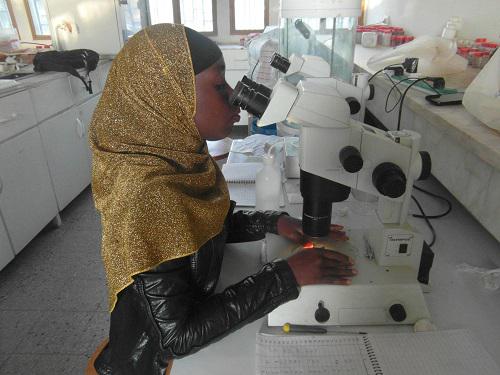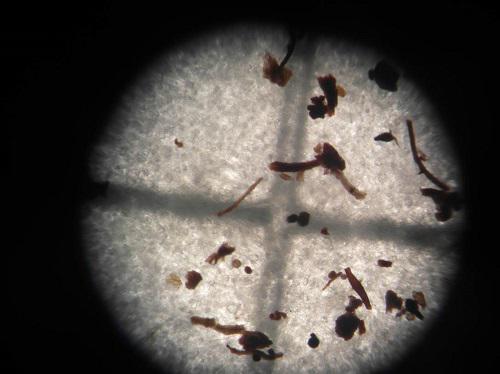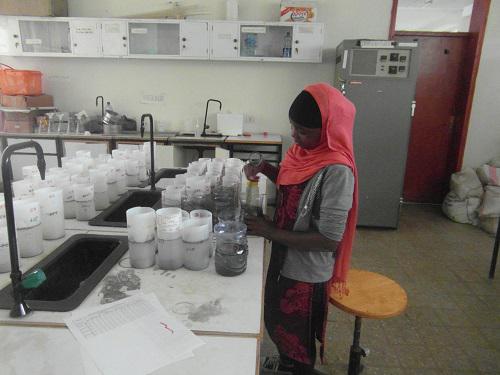Nakiguli Fatumah
The rate of ecological disruption in Mabira forest is increasing at unprecedented rates, as Ugandans search for arable land, fuelwood and settlement. The effects of anthropogenic activities on above-ground biodiversity are physically observable, and thus, all the conservation efforts are directed towards the above-ground biodiversity. This is because no study is done to assess, the extent to which the ‘physically unseen’ below-ground biodiversity is also damaged by anthropogenic activities in order to justify policy and conservation programs from government. This project, therefore, seeks to assess the impact of human activities on the below-ground ecosystems in Mabira forest, using Arbuscular Mycorrhiza Fungi (AMF). The objectives are to: (i) assess the physical extent of forest degradation (ii) quantify AMF genera in Mabira, (iii) assess distribution and abundance of AMF in locations under different levels of anthropogenic disturbances, and (iv) assess the influence of spatial and temporal weather variations on AMF abundance.

Identification of Fungi Genera in Lab.
Mabira is the largest forest reserve in Uganda, and faces unprecedented destruction as the farming communities search for agricultural lands, fuelwood, settlements etc. Nonetheless, the National Forest Authority implements several conservation programs with concerted efforts in re-afforestation, conservation regulation, agroforestry, restoration etc. However, these conservation programs are skewed towards managing above-ground biodiversity with limited, if any, program(s) for the below-ground biodiversity. This is attributable to lack of scientific data and awareness about the extent of destruction caused by anthropogenic activities on the ‘physically un-seen’ below-ground biodiversity not only in Mabira but across Ugandan forest ecosystems, despite their high vulnerability. This project will, therefore, assess the impact of anthropogenic activities on the below-ground ecosystems in Mabira forest, using Arbuscular Mycorrhiza Fungi (AMF) as a case study. The objectives are to:

AMF Spores in Lab.
(i) assess the physical extent of forest degradation

Analysis of AMF Soil Properties in the Lab.
(ii) quantify AMF genera in Mabira,
(iii) assess distribution and abundance of AMF in locations under different levels of anthropogenic disturbances, and (iv) assess the influence of spatial-temporal weather variations on AMF abundance. The main activities include:
1) Baseline survey: Using questionnaires and audio recordings, interviews will be conducted in communities within and surrounding the Mabira forest, including the local leadership and forestry conservation authority. Baseline information about the past and current forest anthropogenic activities Vis-à-vis conservation management activities therein will be collected. Similarly, additional information will be collected using Focus Group Discussions (FGD) with selected main stakeholders namely farmers. Lastly, transect walks in and around the Mabira forest will be done guided by local community forester, - where encroachment/disturbances on the forest reserve will be assessed. All forms of anthropogenic interference (e.g. cut stems, deforestation, arable farming, settlements etc.) in the each of the Mabira forest management zones will be recorded by camera photography.
2) Experimentation for AMF assessment: Line transects will be laid down across the three management zones namely; nature reserve (i.e. strictly nature conservation area), recreation buffer and production zones following the disturbance gradient. Plots of 20 m by 20 m will be established along transects at 100 m apart. AMF abundance, distribution and activities (spore density and root colonization) will be determined from all the soil and root samples of woody plants along the line within the plots. The AMF analysis will be done in the laboratory using standard protocols.
Expected Output: AMF data, ‘Local Reference System’, ecosystems baseline inventory and status map, - as decision-making support tools.